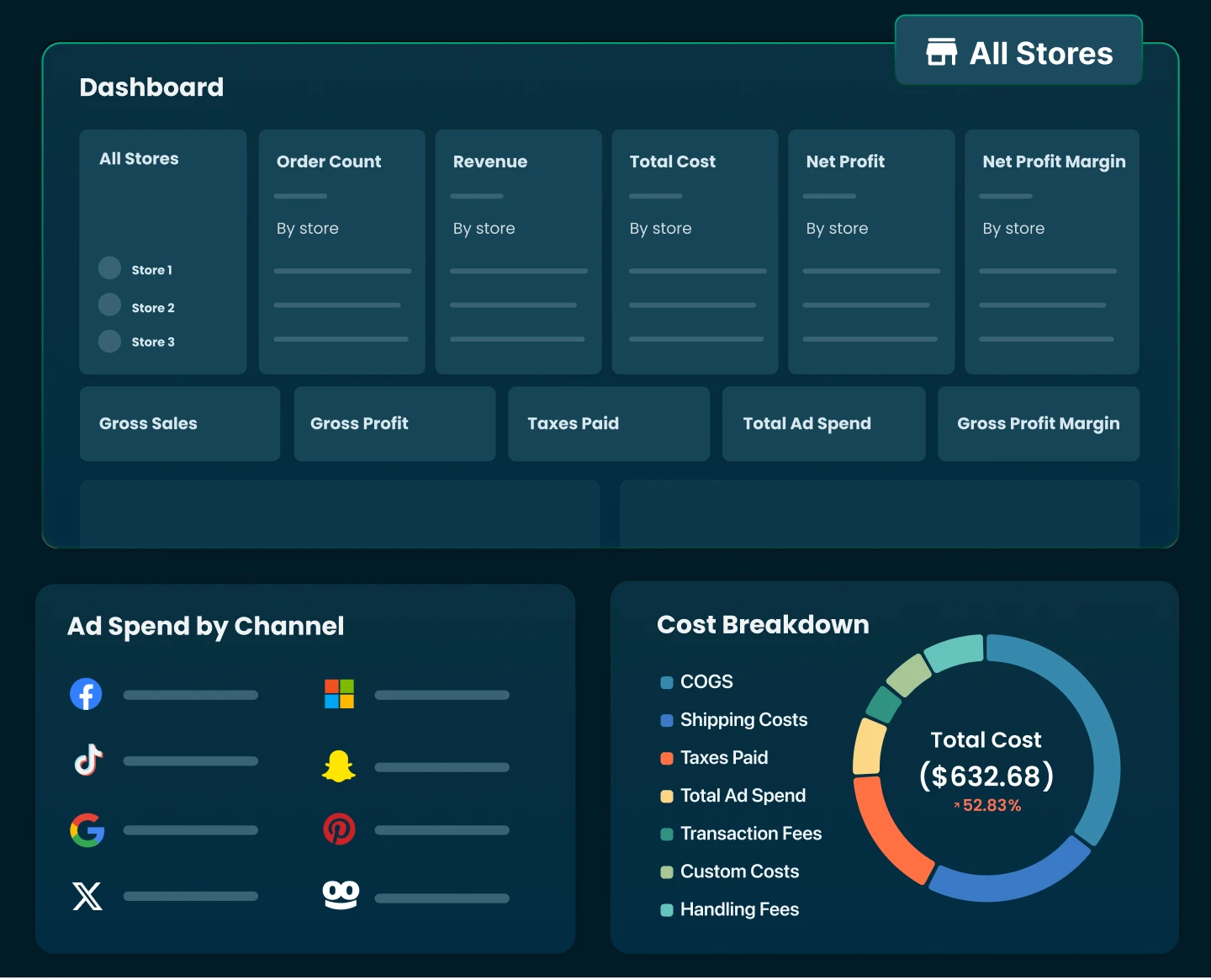
Stop guessing your profits. Calculate your gross profit and margins in seconds to make smarter pricing and sales decisions.
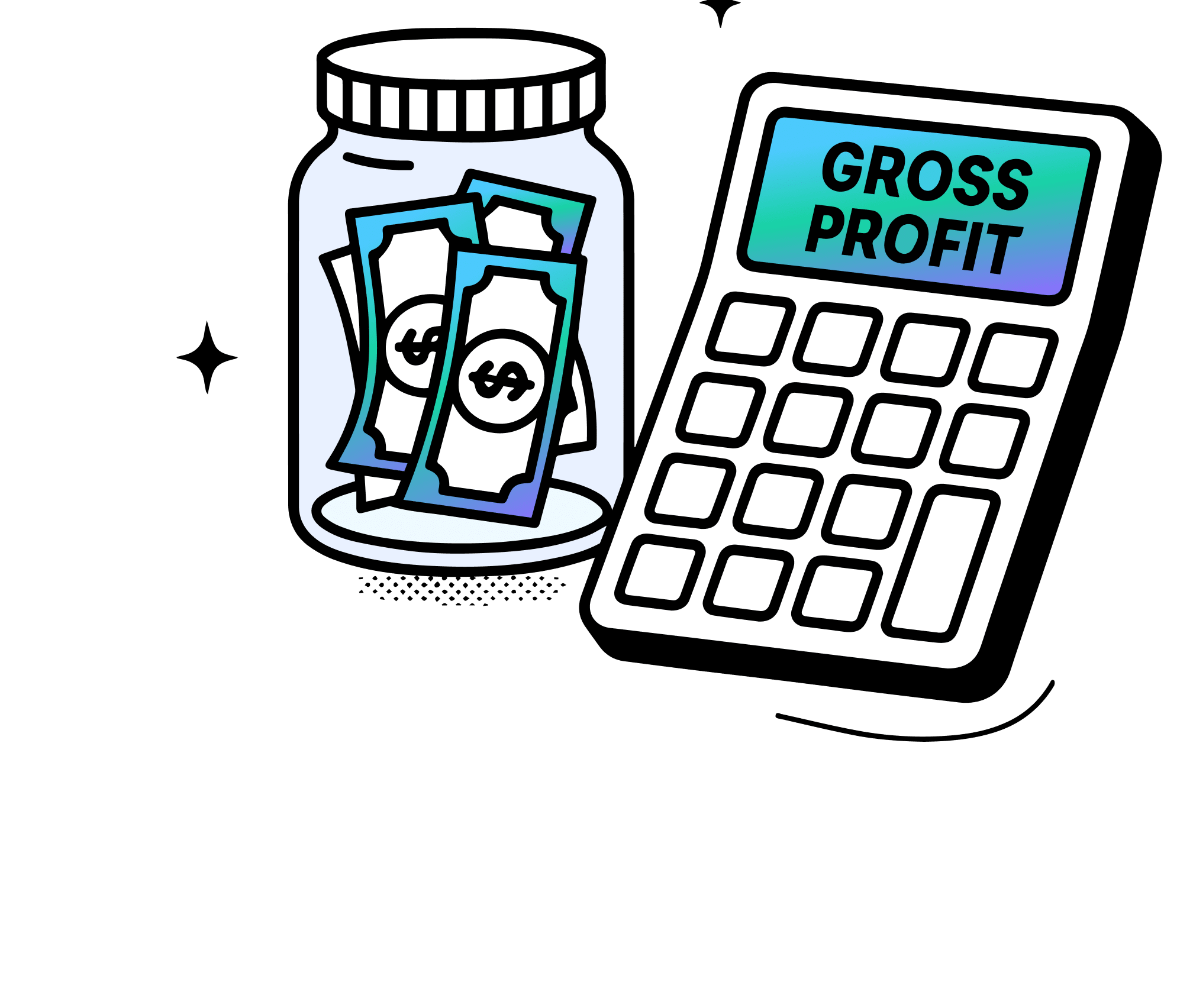
Our free Gross Profit Calculator makes it simple to measure your business profitability. Just enter your total revenue, cost of goods sold (COGS), and use the slider to adjust the number of items sold.
In seconds, you’ll see your Gross Profit — the difference between revenue and COGS — along with your Gross Profit Margin (%), which is calculated as gross profit divided by revenue, multiplied by 100. This gives you a clear picture of how much money your business keeps after covering product costs and shows how effective your pricing strategy really is.
For example: if your revenue is $10,000 and your COGS is $6,000, then your Gross Profit is $4,000.
Then your Gross Profit Margin would be 40% ($4,000 ÷ $10,000 × 100). That means for every dollar earned, you keep 40 cents after covering product costs.
Gross profit is the amount of money a business earns after subtracting the cost of goods sold (COGS) from its total revenue. In simple terms, it shows how much profit is left from sales before minusing expenses like rent, salaries, or marketing.
Gross profit margin, on the other hand, is expressed as a percentage and measures how efficiently a company turns revenue into profit after covering product costs.
Together, gross profit and gross profit margin are both key metrics that show how efficiently a business generates profit from revenue after accounting for the cost of goods sold.
Calculating gross profit and gross margin is actually pretty simple. Your gross profit is just your revenue minus the cost of goods sold (COGS).
Gross Profit = Revenue - COGS
For example, if you sell $25,000 worth of products and it costs you $12,000 to make or buy them, your gross profit is $13,000.
To figure out your gross margin, you take that profit, divide it by your total revenue, and multiply by 100 to turn it into a percentage. In this case, $13,000 divided by $25,000 equals 52%.
Gross profit margin = (Gross profit / Revenue) x 100%
That means you’re keeping 52 cents in gross profit for every dollar of sales after covering product costs.
There isn’t a one-size-fits-all answer because a “good” gross profit margin depends heavily on your product niche and business model.
Here’s a breakdown of what healthy margins typically look like across eCommerce:
Ultimately, a good gross profit margin is one that not only covers your costs but also gives you enough room to reinvest, grow, and stay competitive in your market.
Tracking your gross profit is essential because it shows you how much money your business is actually making after covering the direct costs of your products or services.
Unlike total revenue, which only tells you how much money is coming in, gross profit reveals the real earnings left once expenses like materials and production are paid for.
By keeping an eye on gross profit, you can:
In short, monitoring gross profit isn’t just about crunching numbers—it’s about gaining the financial insight you need to run a stronger, more sustainable business.
The main difference between gross profit vs net profit is what each one measures.
Gross profit is the money left over after subtracting the cost of goods sold (COGS) from your revenue—it shows how profitable your products or services are before other expenses.
Net profit or net income, on the other hand, is what’s left after you deduct all types of expenses, including operating costs, taxes, interest, and even overheads.
In short, gross profit focuses on product-level profitability, while net profit reflects your business’s overall bottom line.
Gross profit matters, but net profit matters more. Without net profit, strong product margins mean little because the company could still be losing money overall. That’s why net profit is the ultimate measure of financial success and sustainability.
Improving gross profit starts with finding the right balance between revenue and costs.
One way is to increase sales revenue by adjusting pricing, offering bundles, or focusing on higher-margin products.
At the same time, you can reduce your cost of goods sold (COGS) by negotiating better deals with suppliers, buying in bulk, or streamlining your production process.
Tracking your gross profit regularly with tools like TrueProfit also helps you spot trends—like rising material costs or underperforming products—so you can take action quickly.
By boosting revenue and keeping costs under control, you’ll see a healthier gross profit and stronger overall business performance.
To track gross profit, you need to subtract your cost of goods sold (COGS) from your revenue. To go a step further, divide your gross profit by revenue and multiply by 100 to get your gross profit margin. This tells you how efficient your business is at turning sales into actual earnings.
The challenge for most eCommerce businesses is that costs aren’t always static — shipping fees, ad spend, and product costs fluctuate daily. That’s why many Shopify merchants rely on TrueProfit, a real-time profit tracking app.
Unlike spreadsheets, TrueProfit automatically consolidates all your business ins and outs such as revenue, orders, ad spend, COGS and all other business expenses to give you a clear, accurate view of both gross profit and profit margin at any moment.
Discover other handy tools designed to save time, optimize pricing, and increase profits.
Easily calculate final prices after two discounts and avoid pricing errors that cut into profits.

Set the right price, secure your profit, and grow your print on demand businesses confidently.
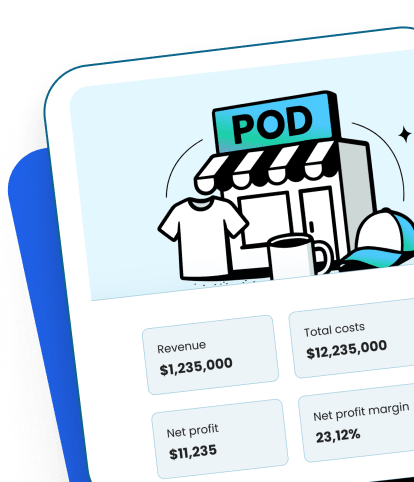
Quickly estimate your margins, set profitable prices, and ensure every sale boosts your bottom line.
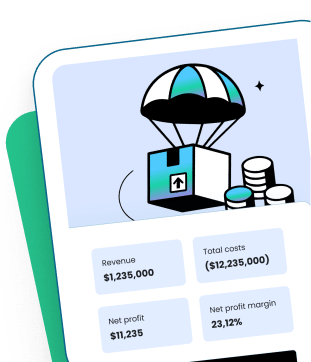
Measure your ad spend efficiency, calculate returns, and maximize your marketing performance with precision.
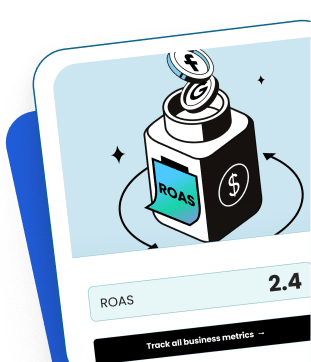
Gross profit includes all revenue from sales minus the direct costs of producing or buying the products you sell. This usually covers raw materials, manufacturing, and wholesale purchase costs.
Gross profit does not include expenses like salaries, rent, utilities, taxes, or marketing. Those costs are considered operating expenses and are only factored in when calculating net profit.
Markup is the percentage added to the cost of a product to set its selling price, while gross profit is the money left after subtracting the cost of goods sold from revenue. Markup focuses on pricing strategy, while gross profit measures profitability.
Tracking gross profit is important because it helps you understand if your products are truly profitable. It highlights cost efficiency, supports better pricing decisions, and gives you insight into your business’s financial health.
To calculate a 20% gross profit margin, use the formula:
Gross Profit Margin = (Revenue – Cost of Goods Sold) ÷ Revenue × 100.
For example, if your product costs $80 (COGS) and you sell it for $100, your gross profit is $20, which equals a 20% margin. This means you keep 20 cents in profit for every dollar of sales. A quick way to find the right selling price is: Selling Price = COGS ÷ (1 – 0.20).
A 30% gross profit margin means 30% of your revenue is profit after covering product costs. Using the same formula:
Gross Profit Margin = (Revenue – COGS) ÷ Revenue × 100.
If your product costs $70 (COGS) and you price it at $100, your gross profit is $30, giving you a 30% margin. To calculate selling price, use: Selling Price = COGS ÷ (1 – 0.30).
Your next wise move starts with seeing your True Net Profit now.
Get instant net profit insights into your numbers to make every choice count— with TrueProfit!
